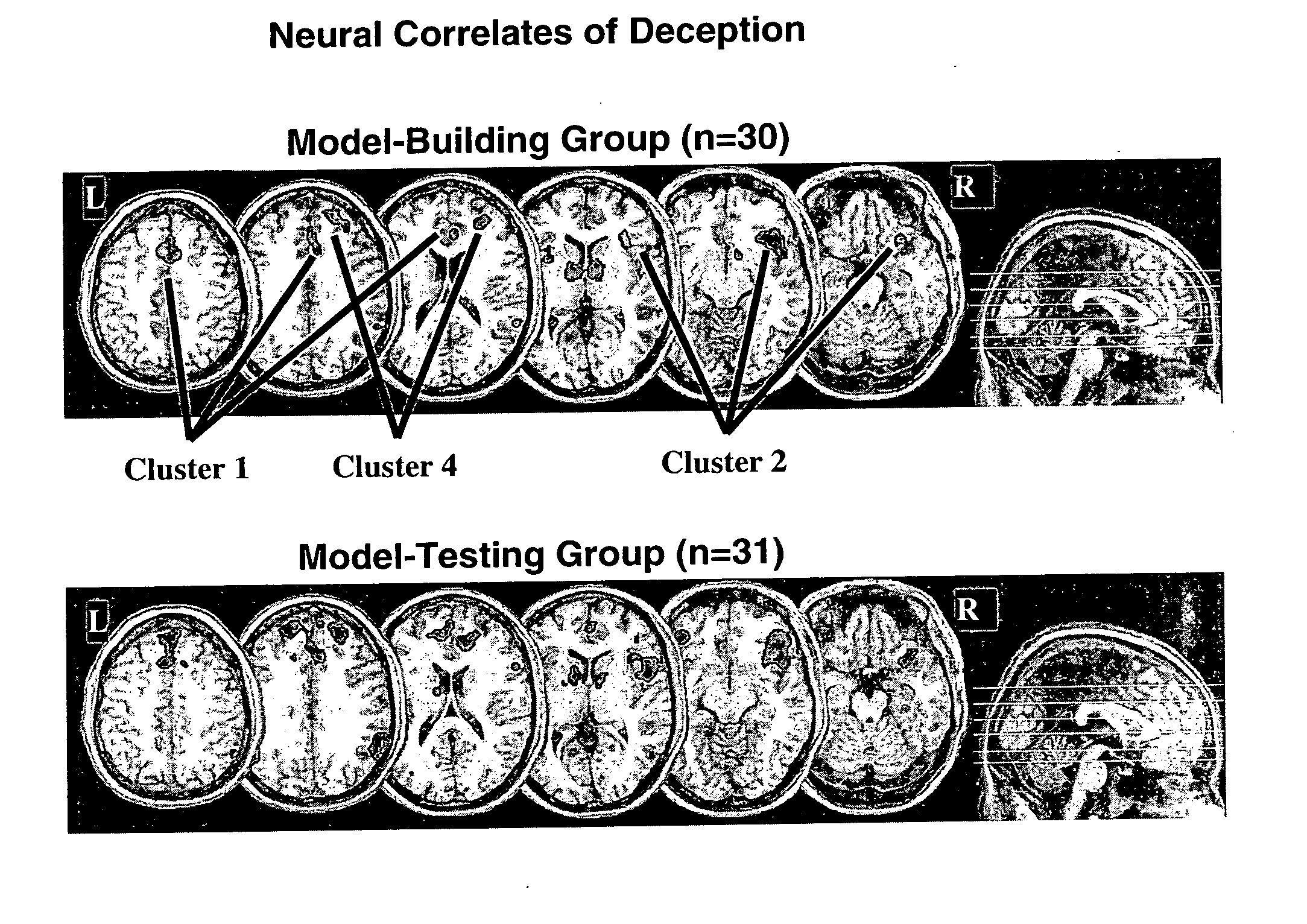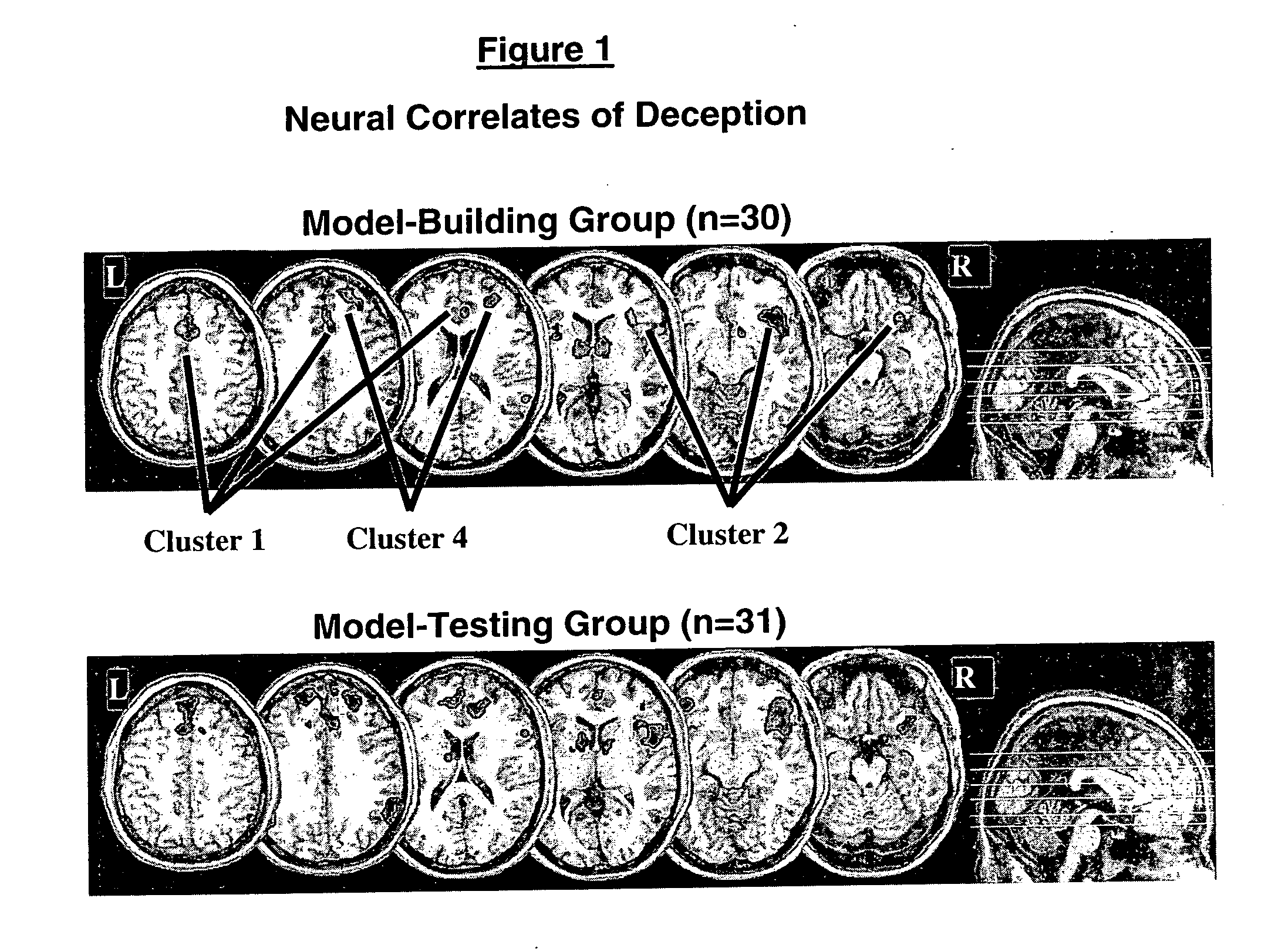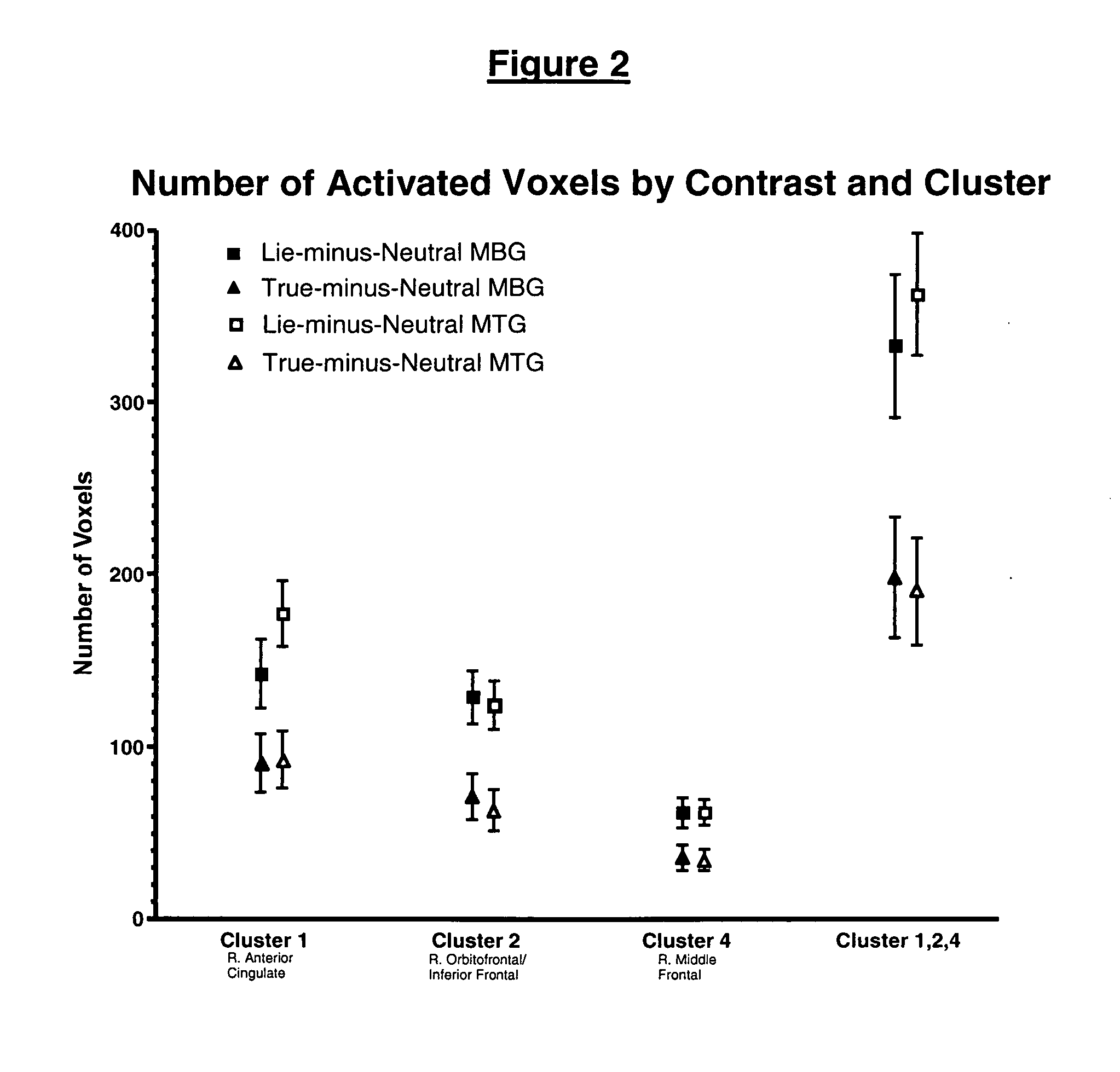Questions and control paradigms for detecting deception by measuring brain activity
a brain activity and questioning control paradigm technology, applied in the field of deception detection by measuring brain activity, can solve the problems of increasing the societal cost of civil litigation, increasing government expenditure and productivity, and common human practice with substantial societal costs, and fraud is estimated to cost the insurance industry $80 billion annually
- Summary
- Abstract
- Description
- Claims
- Application Information
AI Technical Summary
Benefits of technology
Problems solved by technology
Method used
Image
Examples
example 1
Subjects.
[0225] Eight healthy men were examined. The subjects were 21-28 years old (mean age 25), and scored 9-12 (mean score 11) on the Annett Handedness scale for right handedness (Annett (1970)). It was also required that the subjects be able to read and write English; and have the capacity to provide informed consent. Potential subjects were excluded if they had (1) a history of any current or past Axis I Psychiatric Disorder other than simple phobias but including substance abuse / dependence as determined by the Structured Clinical Interview for DSM-IV Axis I Disorders (SCID-I) (First et al. (1995)); (2) a history of neurologic disease; (3) a currently unstable medical condition; (4) used psychotropic medication within 5 half-lives of the procedure time; (5) caffeinism; (6) nicotine use; (7) any metal implants or shrapnel which would make an MRI procedure unsafe; (8) irremovable medical devices such as pacemakers or fixed hearing aids; (9) previous inability to tolerate an MRI...
example 2
Subjects.
[0249] Thirteen subjects were scanned, but three were excluded for failure to provide deceptive responses as instructed. Ten healthy subjects (7 men and 3 women) were examined. The subjects were 20-35 years old (mean age 27.8), and scored 10-12 (mean score 11.2) on the Annett Handedness scale for right handedness (Annett (1970)). It was also required that the subjects be able to read and write English; and have the capacity to provide informed consent. Potential subjects were excluded if they had (1) a history of any current or past Axis I Psychiatric Disorder other than simple phobias but including substance abuse / dependence as determined by the Structured Clinical Interview for DSM-IV Axis I Disorders (SCID-I) (First et al. (1995)); (2) a history of neurologic disease; (3) a currently unstable medical condition; (4) used psychotropic medication within 5 half-lives of the procedure time; (5) caffeinism; (6) nicotine use; (7) any metal implants or shrapnel which would mak...
example 3
Subjects.
[0262] A subject of interest (e.g., a criminal defendant, an individual with access to confidential information) is identified for examination. Initially, subjects are assessed to determine that they are appropriate. Subjects of interest are not scanned if they have any metal implants or shrapnel which would make an MRI procedure unsafe; irremovable medical devices such as pacemakers or fixed hearing aids that would make the MRI procedure unsafe; or claustrophobia severe enough to induce overwhelming anxiety in closed spaces. The subject is subjected to extensive testing for the use of psychotropic drugs. In addition, medical history, psychiatric history, and handedness are carefully assessed. If the subject has taken psychotropic drugs within 5 half-lives, the test is delayed if possible until 5 half-lives have elapsed. Female subjects are given pregnancy tests. If the subject is pregnant, the test is delayed if possible until after the pregnancy. The ability of the subj...
PUM
 Login to View More
Login to View More Abstract
Description
Claims
Application Information
 Login to View More
Login to View More - R&D
- Intellectual Property
- Life Sciences
- Materials
- Tech Scout
- Unparalleled Data Quality
- Higher Quality Content
- 60% Fewer Hallucinations
Browse by: Latest US Patents, China's latest patents, Technical Efficacy Thesaurus, Application Domain, Technology Topic, Popular Technical Reports.
© 2025 PatSnap. All rights reserved.Legal|Privacy policy|Modern Slavery Act Transparency Statement|Sitemap|About US| Contact US: help@patsnap.com



